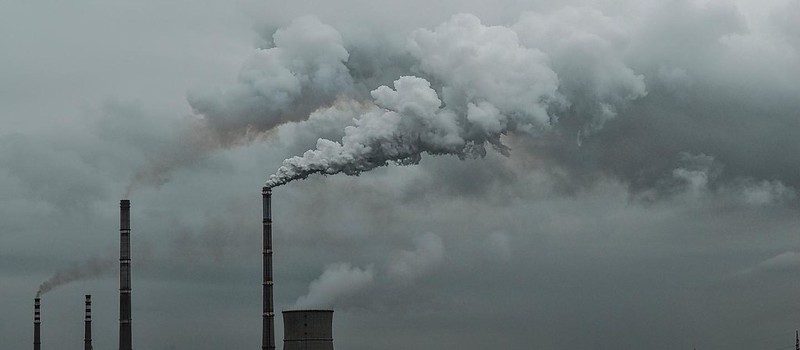
聯合國環境規劃署(UNEP)11月27日發布報告指出,經過三年的平緩期,全球二氧化碳排放量在2017年再次上升,各國迫切需要達成巴黎協定目標,以控制全球暖化在高於工業化前水平2°C以內。
UNEP 2018年全球排放報告顯示,全球排放量已達到歷史新高。包括土地利用變化在內的年度溫室氣體排放總量在2017年達到創紀錄的53.5億噸,比2016年增加0.7億噸。「2030年的全球溫室氣體排放量需要比2017年低約25%至55%之間,才能用最低成本限制全球暖化在2°C和1.5°C之間。」
有些國家正努力減少碳排放。2017年1月,中國國家能源局下令11個省停止100多個燃煤發電計畫,總容量超過100百萬瓩(GW),但全球溫室氣體排放的現實與理想差距仍在擴大。
這第九份的UNEP溫室氣體排放報告是由一國際科學家團隊負責,內容根據了所有可用資訊的科學評估所編輯。 UNEP首席科學家劉健博士說,「政府財政補貼低排放替代品和向化石燃料課稅,可以刺激能源部門正確投資,並大幅減少碳排放。」「幸好,人們逐漸瞭解利用財政政策作為激勵措施的潛力。」他指的是全球已經制定或計劃採取的51項碳排放措施,即「碳價」政策。
「如果淘汰所有化石燃料補貼,全球碳排放量到2030年可減少多達10%,」劉健補充說明,「設定合適的碳價也是不可或缺的措施。若碳價為每噸二氧化碳70美元,某些國家可能可以減排高達40%。」
UNEP報告發布後,聯合國氣候變遷峰會(COP24)隨即於12月2日至14日在波蘭卡托維茲舉行。COP24的主要目標是通過2015年巴黎協定的實施計劃。
美國政府同一時間也發表了由美國全球變遷研究計劃(U.S. Global Change Research Program, USGCRP)和13個聯邦機構300名科學家聯合編撰的第四次全國氣候評估報告。
USGCRP報告是受美國國會強制規範產生的報告。其結論是,除非立即限制化石燃料的使用,否則到2100年美國將至少再升溫3度。
報告認為,日益嚴重的水資源短缺和乾旱、越來越劇烈的風暴、致命的野火,以及熱帶疾病增加與氣候變遷有關。「隨著碳排持續創歷史新高,到本世紀末某些產業的年度虧損預計將達到數千億美元,超過美國許多州目前的國內生產總值,」
聯合國政府間氣候變遷專門委員會IPCC 10月份的報告警告,排放量必須立即停止上升,升溫幅度必須保持在1.5°C以下,並降低地球、人民和野生物風險。
沒有任何證據顯示這個趨勢有逆轉的跡象,全球只有57個國家(佔全球排放量的60%)正在按計劃彌補碳排現實與目標的差距。
由於排放量增加、氣候行動延遲,這份報告呈現出的現實與理想差距空前遙遠。UNEP強調,雖然「來自私營部門的動能突增」和「創新和綠色融資尚有潛力待開發」是縮小全球排放現實與理想差距的機會,但將全球升溫限制在1.5°C的「技術可行性」正在減少。
該報告的作者指出,要在本世紀中葉實現控制升溫2°C內的目標,各國的氣候行動需增加三倍。實現控制升溫1.5°C內,必須加倍行動。報告調查結果顯示,照目前的趨勢,本世紀末全球氣溫會升高3°C左右。
報告也提供政府財政政策、創新技術、非國家和地方行動等縮小排放差距的方法。
Global carbon dioxide (CO2) emissions rose again in 2017 after a three year pause, pinpointing the urgent need for countries to deliver on the Paris Agreement to keep global warming to 2°C above pre-industrial levels, finds a new report released today by the United Nations Environment Programme, UNEP.
UNEP's 2018 Global Emissions Report, show global emissions have reached historic levels.
Total annual greenhouse gas emissions, including from land-use change, reached a record high of 53.5 gigatons in 2017, an increase of 0.7 compared with 2016.
"In contrast, global greenhouse gas emissions in 2030 need to be approximately 25 percent and 55 percent lower than in 2017 to put the world on a least-cost pathway to limiting global warming to 2°C and 1.5°C respectively," says the report.
Some countries are trying to reduce their carbon emissions. In January 2017, China's energy regulator ordered 11 provinces to stop over 100 coal-fired power projects, with a total installed capacity of more than 100 gigawatts, but the worldwide greenhouse gas emissions gap is still widening.
This ninth UNEP greenhouse gas emissions report was prepared by an international team of scientists, assessing all available information.
"When governments embrace fiscal policy measures to subsidize low-emission alternatives and tax fossil fuels, they can stimulate the right investments in the energy sector and significantly reduce carbon emissions," said UNEP's Chief Scientist Dr. Jian Liu.
"Thankfully, the potential of using fiscal policy as an incentive is increasingly recognized," said Dr. Liu, referring to the 51 initiatives already in place or planned throughout the world to charge for carbon emissions, a policy called "carbon pricing."
"If all fossil fuel subsidies were phased out, global carbon emissions could be reduced by up to 10 percent by 2030," Dr. Liu added, explaining that "setting the right carbon price is also essential. At US$70 per ton of CO2, emission reductions of up to 40 percent are possible in some countries."
The UNEP report comes just days before the annual UN climate change conference, COP 24, taking place in Katowice, Poland December 2-14. The key objective of COP24 will be to adopt an implementation plan for the 2015 Paris Agreement.
It follows after the release Friday of the U.S. government's Fourth National Climate Assessment, congressionally mandated and developed by the U.S. Global Change Research Program, USGCRP, and 300 scientists in 13 federal agencies.
The USGCRP report concludes that the United States will warm at least three more degrees by 2100 unless the burning of fossil fuels is limited immediately.
The U.S. report connects climate change to increasing water scarcity and drought, worsening storms, deadly wildfires and greater exposure to tropical diseases across the United States.
"With continued growth in emissions at historic rates, annual losses in some economic sectors are projected to reach hundreds of billions of dollars by the end of the century – more than the current gross domestic product of many U.S. states," finds the USGCRP report
The United Nations report follows shortly after the Intergovernmental Panel on Climate Change, IPCC, released a in October, which cautioned that emissions had to stop rising now, to keep temperature increases below 1.5°C, and reduce the risks for the well-being of the planet, its peoples and its wildlife.
There is no sign of reversal of this trend and only 57 countries, representing 60 percent of global emissions, are on track to bridge their "emissions gap" – the gap between where we are likely to be and where we need to be.
Increased emissions and lagging action means the gap published in this year's report is larger than ever.
UNEP stresses that while "surging momentum from the private sector" and "untapped potential from innovation and green-financing" offer "pathways" to bridge the emissions gap globally, the "technical feasibility" of limiting global warming to 1.5°C "is dwindling."
The authors of the report note that nations would need to triple their efforts on climate action without further delay, in order to meet the 2°C-rise limit by mid-century. To meet the 1.5°C limit, they would have to quintuple their efforts. A continuation of current trends will likely result in global warming of around 3°C by the end of the century, with continued temperature rises after that, according to the report findings.
The report offers ways for governments to bridge their emissions gaps, through fiscal policy, innovative technology, non-state and subnational action, and more.
※ 全文及圖片詳見:ENS
※ 2018 Emissions Gap Report、資料視覺化互動網頁






